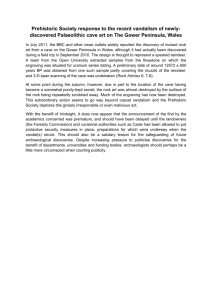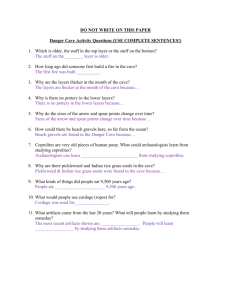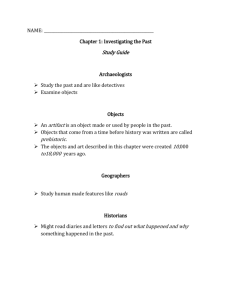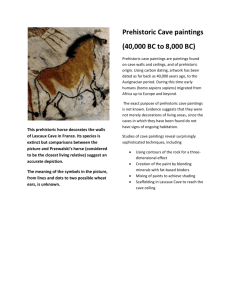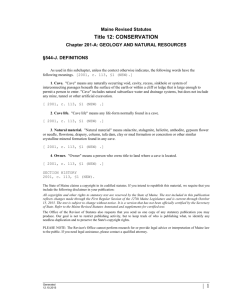Curatoe Hill Cave - The Jamaican Caves Organisation
advertisement
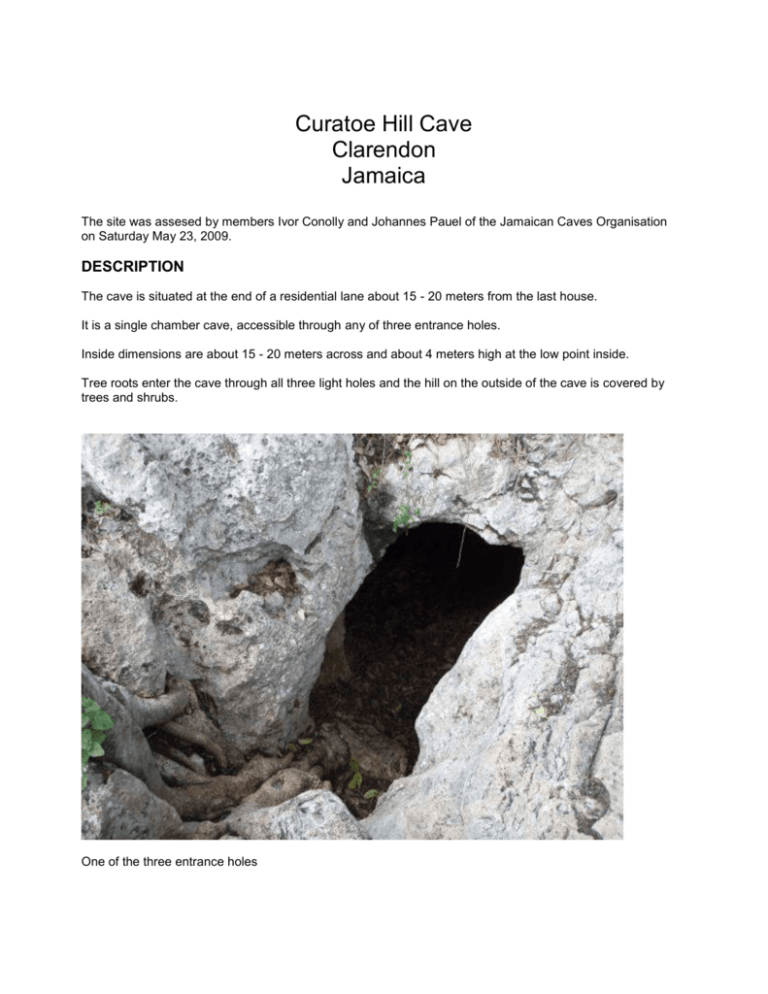
Curatoe Hill Cave Clarendon Jamaica The site was assesed by members Ivor Conolly and Johannes Pauel of the Jamaican Caves Organisation on Saturday May 23, 2009. DESCRIPTION The cave is situated at the end of a residential lane about 15 - 20 meters from the last house. It is a single chamber cave, accessible through any of three entrance holes. Inside dimensions are about 15 - 20 meters across and about 4 meters high at the low point inside. Tree roots enter the cave through all three light holes and the hill on the outside of the cave is covered by trees and shrubs. One of the three entrance holes A second entrance hole .A view from one side across to the other. HISTORY Locals in the area used to mine guano from the cave and there is evidence of substantial digging in the past. The young men (20 - 30yr olds) from the area who accompanied us told us that as teens they would use it as a party spot to hang out and cook. They say a Rastaman actually used to live in there too. There is evidence of previous fires and a small amount of garbage (not recent). I did not see any plastic trash which led me to believe it has not been visited/used much lately. The garbage in there seemed dated. It did not seem to be used now for either guano mining (there is no guano left) or partying. Several of the young men said it had been many years since they'd been inside. Others had never been. BIOTA The cave is presently used by goats as a shelter. The observed cave biota consists of: Cave crickets (U. cavicola) and Bats (species undetermined) . Locals told us that a few years ago there was a sizeable population of bats in the cave, but that their numbers had diminished due to the disturbance from visitation and fires/smoke. The bats roost in the bell holes, and we observed an approximate population size of perhaps over 100. The bats seemed to be a vibrant roost, as we saw many nursing young pups, and we did not want to further disturb them with bright lights to count. One local remarked that the population seemed to be getting slightly larger since the last time he was in there. Bell holes in the ceiling The Bell Holes that house the bats and their nursing infants. HYDROLOGY The locals told us that the cave took water in wet times. They pointed out two more sites just on the outside of the cave where water pooled and drained relatively quickly. One site was said to become a small pond in the rainy seasons that became a habitat for birds and ducks. ARCHAEOLOGY The geographic location of the cave made it a potential site to contain archaeological artifacts. It is very close to a river, on a plain and our thoughts are that it could potentially have been a shelter for Amerindians. We did not see any evidence of cave art on the walls or ceiling though. It was suggested that perhaps the cave floor had silted up over many years as the surrounding forest cover was removed, and there is still the possibility that artifacts could exist under the dirt/mud floor. Other Findings A path/road has already been cleared within 50 meters of the cave. We were told that seismic testing had been done recently by 'big trucks and explosives' and we were shown the supposed test holes. Although the cave is not a large one and does not host a very large bat population, we feel that the effort should be made to preserve this quite scenic natural feature for future generations. It seems that human visitation to the site has significantly decreased in the last few years, and so it hoped the bat population will continue to recover and increase. There does exist the possibility that the site could contain archaeological remains that have been silted over. This could be a potentially good site for academic study in the future in this respect. The locals told us that the land just to the south of the cave is unused bauxite lands and that the road should be veered more in that direction to preserve their community. If this is indeed so, we would concur and hope that the cave could be preserved as well. The track just behind the cave looking west towards the river. May 28, 2009 Prepared by: Johannes Pauel of THE JAMAICAN CAVES ORGANISATION 93 PORT ROYAL STREET KINGSTON, JAMAICA 876 990 7255 admin@jamaicancaves.org www.jamaicancaves.org



